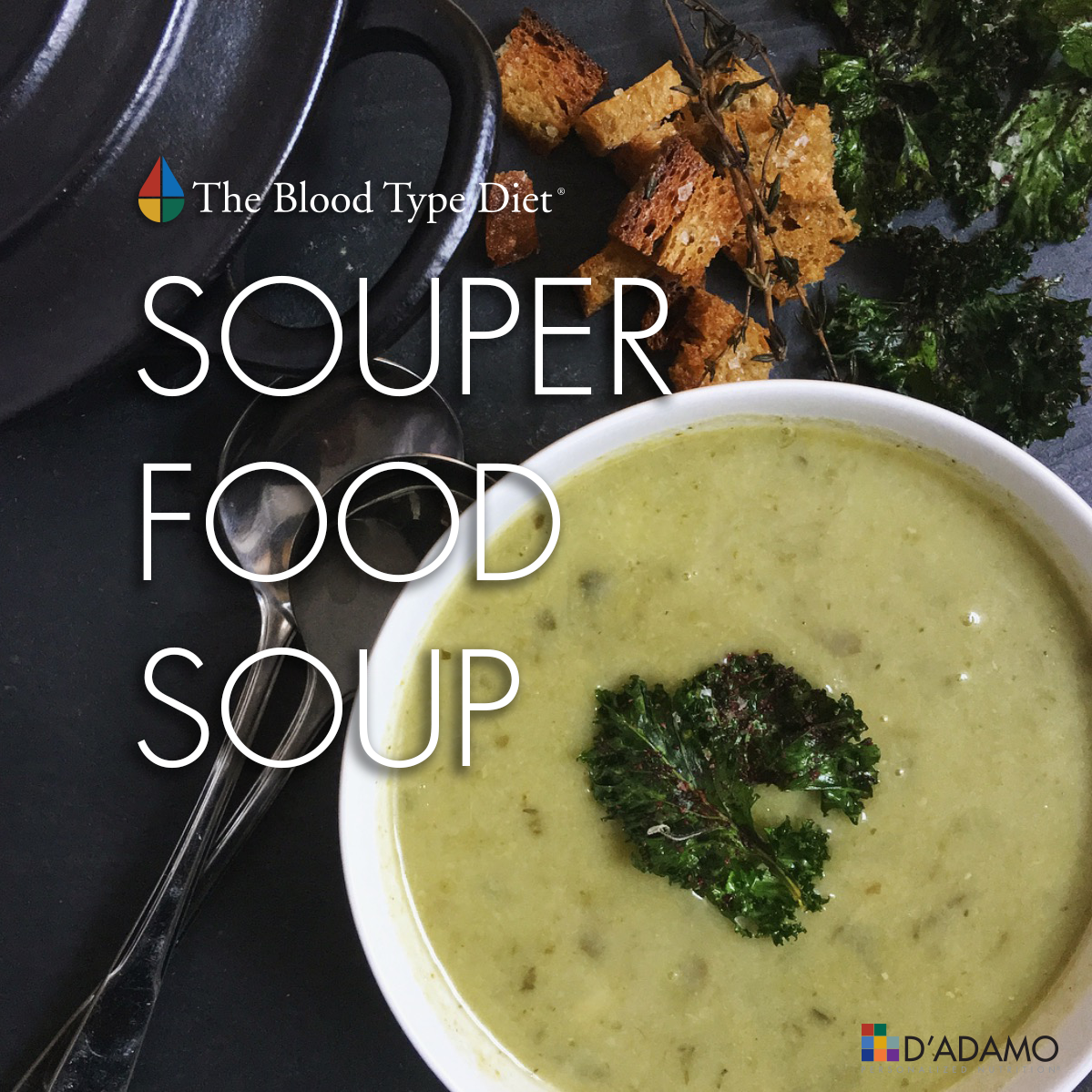Volume 14, Number 3
- Happy March by Martha D'Adamo
- Lectins and Blood Types by Dr. Peter J. D'Adamo
- Dr. D'Adamo's Favorites
- Marlene R. - Blood Type Diet Success Story
- Blood Type Diet in the News
- Souper Food Soup - Right 4 All Blood Types
- We're on Instagram! Follow us for daily inspiration and quick healthy lifestyle tips.
Happy Marchby Martha D'Adamo |
|
|
|
Believe it or not, sixty days have already passed since the start of the New Year. How are you doing with your resolutions? Are you staying true to the goals you set for yourself? The month of March is a great time to check in and make sure that you don’t slip from the commitments you made at the start of the year while also adding any helpful new revelations you’ve discovered to your lifestyle. Since this is a moment to see what stuck and what didn’t in your life, we thought there was no better topic to focus on for March than lectins: the sticky little proteins that are a fundamental part of the Blood Type Diet. Knowing how different lectins interact with people who have different blood types is one of the most important factors in deciding what diet is best for you. Eating foods wrong for your type is known to promote inflammation, weight gain and an overall slowing of your metabolism. Many of the lectins found in “avoid” foods are to blame for such issues. Look at the chart featured in the article below that highlights the most problematic lectins for each blood type. It’s a great way to start optimizing your metabolism and increase overall vitality. Whether you’re on the right path or the wrong one sixty days into the year, there’s always room for improvement and growth. We hope this information on lectins can be the aid you need to bolster your healthy habits or remove harmful ones. Taking these few simple steps can revitalize you just in time for the warm weather of spring that’s ever so gently knocking on the door. Martha |
|
Understanding the way lectins work is paramount to understanding the positive impact the Blood Type Diet can have on you. But before exploring how lectins behave within your body, you have to understand what a lectin actually is. In the simplest of terms, a lectin is a type of protein that acts as a selective Velcro-like material. They come in two main forms, single and double-sided. The single sided lectins only stick to other things. Cells in the liver have this type of lectin on their surfaces to snatch up harmful bacteria and parasites that may be present. Two sided lectins stick two other cells together, like a piece of double-sided tape between objects. Both varieties, despite their differences, have many commonalities. Although both the single and double sided kinds both cause agglutination (the clumping of particles), they do so in specific, individualized ways. Each lectin has a certain type of material it is meant to bind to and this changes depending on what species the reaction is occurring inside as well as the blood type of the person or animal involved. The source of the lectin itself also has a great bearing on how it will react. For example, the lectin found in wheat is different from the one found in soy, both in its appearance and how it interacts with different sugars. Understanding the source of the lectin and the chemistry of the person consuming it is at the center of eating right for your blood type.
Some foods have lectins that react specifically to particular blood types. One of the best examples of this phenomenon is wheat germ agglutinin, or WGA. Though gluten is the poster child for wheat’s harmful effects on the human body, WGA’s are another toxic, negative component found in wheat-based products. Though gluten isn’t a lectin like a WGA they both can cause similar issues in the body such as a leaky gut. WGA’s go a step further than gluten though, causing insulin resistance and Vitamin D deficiency as well. While it has been consistently proven harmful to animals when administered in large doses, for human beings it disproportionately affects Type O Blood Types. Knowing about harmful lectins like WGA is vital for general health, but when looking at how they interact with each Blood Type specifically, it makes the knowledge all the more important. Dr. Peter D’Adamo has been an advocate of understanding lectins since Eat Right 4 Your Type debuted in 1997. He has continued to stress the importance of lectins on one’s diet, and it seems that the rest of the world is finally starting to come around to that fact as well. Ignoring your blood type and how its lectins interact with the ones found in the food you consume is a recipe for disaster. While this article is a great summary of how lectins work, it only scratches the surface of the depth behind their function. |
Dr. D'Adamo's Favorites for:
|
|||
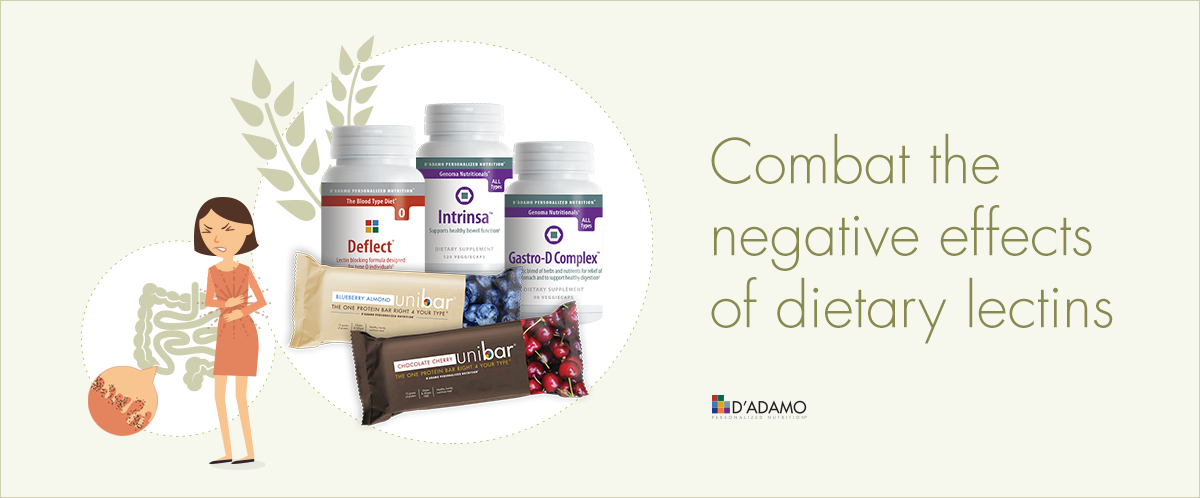 |
|||
|
The best way to combat the negative effects of lectins is to follow the diet “Right 4 Your Type” and to bolster your efforts with the proper supplements. Minimize inappropriate lectin activity with Deflect, conquer digestive imbalances with Gastro-D Complex and restore harmony to your gut with Intrinsa. Make sure to snack healthy too, with either our Chocolate Cherry or Blueberry Almond Unibars! |
|||
Marlene R.Blood Type Diet Success Story |
|
|
After finding out I was a Type O, I took the advice from Dr. Peter D’Adamo’s books and transitioned to a diet that was strikingly similar to the foods I was eating back home in the Caribbean. I also began walking, an exercise recommended for my type. These two changes in unison led to the loss of over 60 pounds. After a year of following the lifestyle plan, I went to visit Dr D’Adamo’s clinic in Bridgeport, CT to get past a weight loss wall and reach my own personal goal of 140 pounds. He recommended I add running to my routine, as it was another great activity for my blood type that would shed even more calories than the walking I was already doing. I took his advice and started running in 2013, losing an additional 15 pounds as I ran in marathons and trail races and often found myself finishing in the top 3 in my age group. My energy level, cognitive ability, and overall wellness had never been higher across the board. I truly felt alive. As with anything in life, things can come out of the blue and set you back. In 2015, I caught a spell of bad luck when I sustained a foot injury that made it impossible for me to run for several months. Even when it healed, I was unable to run at the same level I had before the injury, which led to a weight gain of 20 pounds despite eating the right foods. Now, in 2017, I am back to running more comfortably and am shedding the pounds once again. Even when I was unable to do the activities that Dr. D’Adamo recommended for my blood type, maintaining the healthy Type O diet kept my health at amazing levels that made losing weight again when I was able to exercise a cinch and made sure my body didn’t balloon in the meantime. I am turning 60 this year and incredibly proud of how I look and how I feel. Through good times and bad, I firmly believe the Blood Type Diet is the reason I am as healthy as I am today. |
|
Souper Food SoupRight 4 All Blood Types |
|
|
|
(Serves 2) Ingredients
|



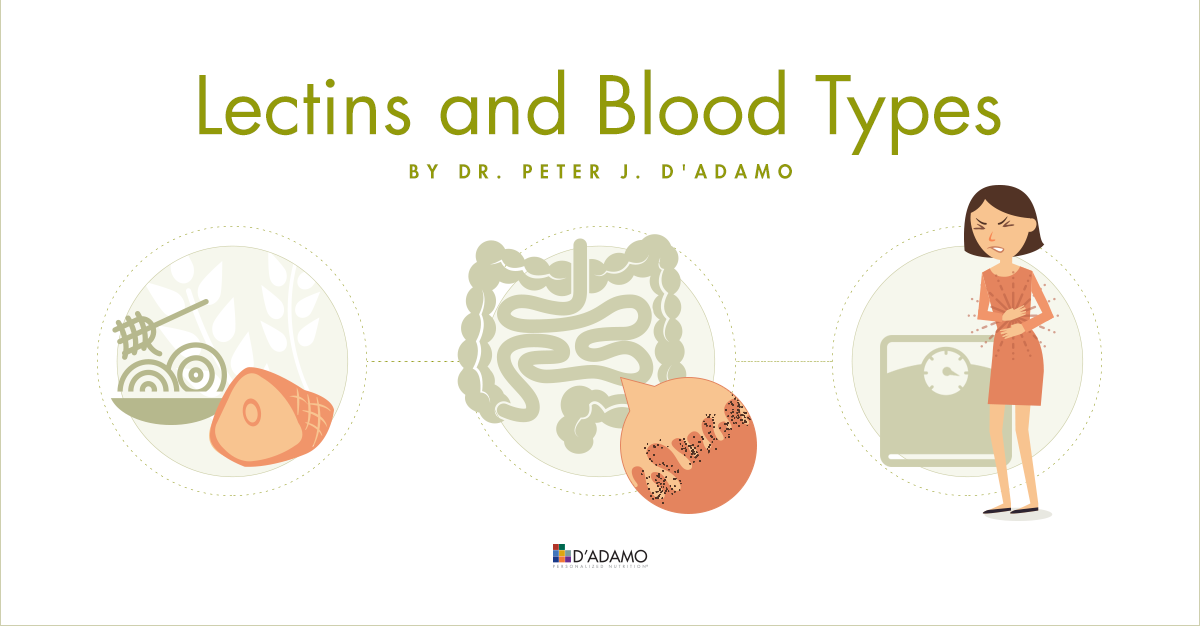
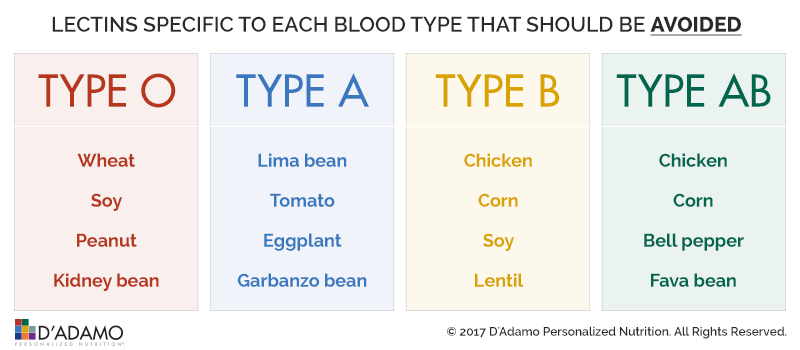



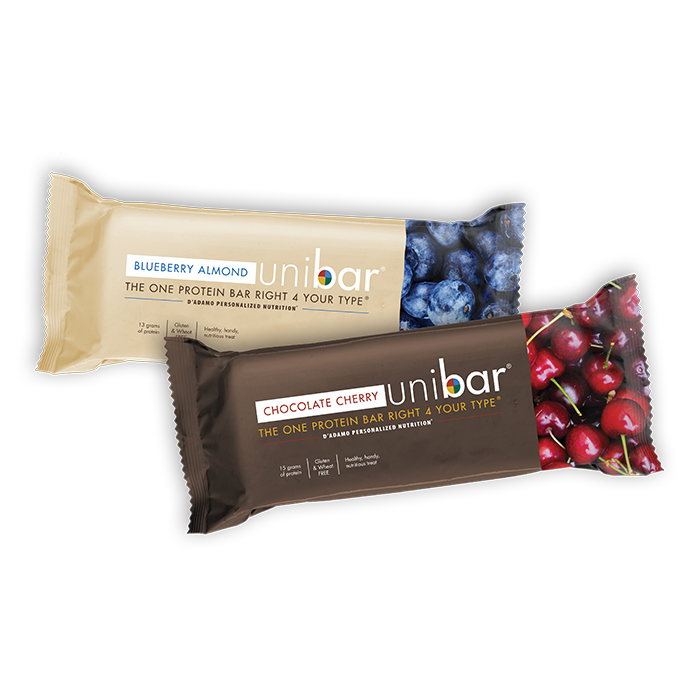
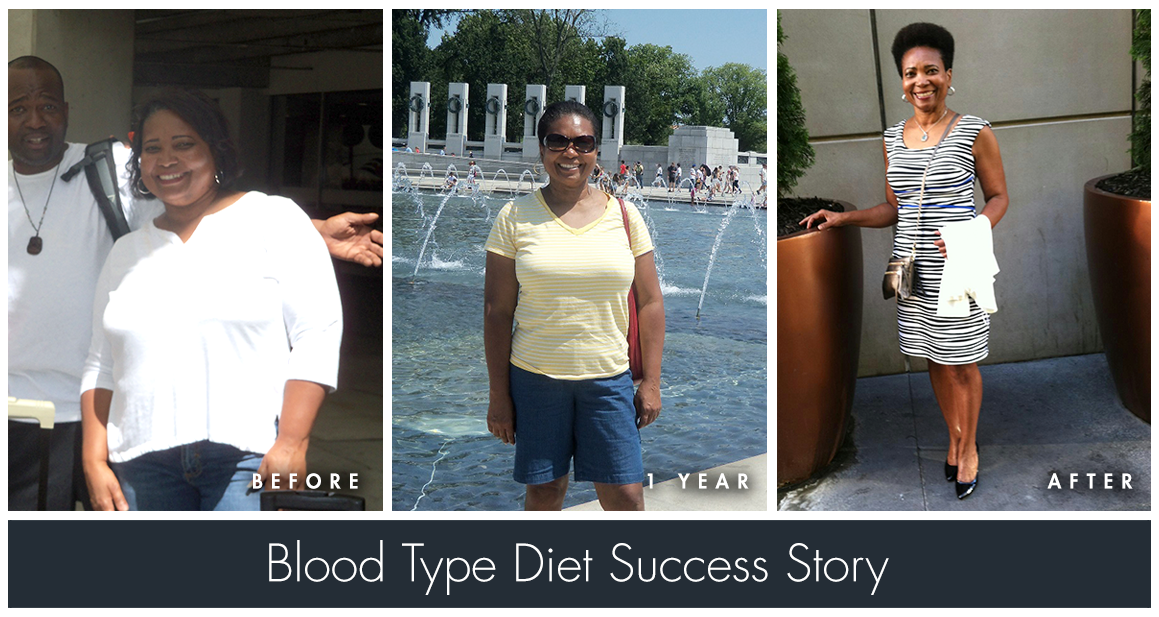 I grew up in the Caribbean with a traditional, regional diet. It always worked well for me at a young age, but as I grew up and moved to America, I got away from the food of my youth and gained weight in the process. In 2012, I hit the highest weight of my life at 212 pounds and couldn’t take the way I felt any more. I knew I had to do something, so I went out and bought Eat Right 4 Your Type and Live Right 4 Your Type. The best part about reading both books was they just MADE SENSE. They were simple to understand and easy to integrate into my lifestyle.
I grew up in the Caribbean with a traditional, regional diet. It always worked well for me at a young age, but as I grew up and moved to America, I got away from the food of my youth and gained weight in the process. In 2012, I hit the highest weight of my life at 212 pounds and couldn’t take the way I felt any more. I knew I had to do something, so I went out and bought Eat Right 4 Your Type and Live Right 4 Your Type. The best part about reading both books was they just MADE SENSE. They were simple to understand and easy to integrate into my lifestyle.


